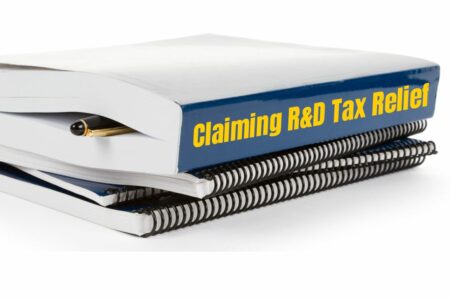With all the difficulties that this landscape poses, tax advisers have a valuable tool available to them – the voluntary disclosure. This mechanism empowers advisers to take control, rectify errors, and bring more structure to the process of handling R&D tax relief claims.
Before delving into the specifics of what a voluntary disclosure is and why it should be considered, let’s take a look at the common mistakes that HMRC has been identifying in recent claims:
- Claims for Non-Qualifying R&D Work: Instances where there’s no identifiable advance in technology. For example, a new client has claimed for software development which may have appeared innovative, but its own in-house IT team is not highly qualified. They could not buy a commercially available package, so they developed one in-house. The IT staff, due to their lack of competency and expertise in software engineering, were unable to clearly define what “advance” the project was aiming to achieve in terms of software science or engineering.
- No Identifiable Project: Claims lacking a clear project structure, where uncertainties are discovered during routine business activities rather than a systematic R&D project.
- Claims in Non-Qualifying Fields: Attempts to claim in fields such as social sciences that do not align with the criteria for R&D.
- Incorrect Costs: Inclusion of inappropriate costs, including capital expenditure and recruitment charges.
- Inflated Costs: Instances where a significant number of employees are included in the claim, irrespective of their involvement in the R&D project.
Now, let’s explore the concept of a voluntary disclosure and its benefits for R&D tax advisers.
What is voluntary disclosure?
A voluntary disclosure is an admission by the taxpayer, often in collaboration with their tax adviser, that an error has been made and they want to correct it. This proactive approach can be initiated by individual businesses through the Digital Disclosure Service (DDS).
How do I make a voluntary disclosure?
Individual businesses (i.e not corporate groups) can make a voluntary disclosure regarding R&D tax relief mistakes using the Digital Disclosure Service (DDS).
After receiving the voluntary disclosure, HMRC will write back with a unique disclosure reference number (DRN) which should be quoted when contacting HMRC about the disclosure. They’ll also send a payment reference number which should be used when the underpaid tax and penalties are paid.
The Mid-Sized Business Customer Operations Team may be another avenue to go down if the claimant business has turnover in excess of £10m and 20 or more employees. If successful, they’ll assign one of their team members to your case to help you with the voluntary disclosure.
While it’s true that many who contact HMRC this way could use the DDS system, sometimes you need the added peace of mind of a named officer that you can communicate with. If you tell them that the voluntary disclosure relates to corporation tax, usually they’ll agree to help and provide you with an assisting named officer.
If you discover serious fraud with an R&D tax relief claim, you must contact HMRC through the Contractual Disclosure Facility. This can provide immunity from criminal proceedings, but you will need to seek expert assistance.
Why should advisers consider highlighting mistakes to HMRC?
- Lower Penalties: Voluntary disclosure often leads to more lenient penalties.
- Control and Set Timeframes: Both the adviser and client can take charge within defined timeframes, in contrast to the often-prolonged HMRC-led enquiry process.
- Positive Client Experience: Clients lead the process, resulting in a more positive experience with known timelines and clear expectations.
- Streamline Enquiries: Shift an ongoing enquiry towards a more expedient voluntary disclosure route. HMRC is usually in the driver’s seat with enquiries, so highlighting mistakes that you and your client are aware of allows you to take charge of the situation. Making a voluntary disclosure prompts HMRC to assign a new case worker and it restricts the communication they have with your client.
If a voluntary disclosure is well prepared and explained, it’s unlikely that HMRC will need to request further information. This will allow the disclosure process to be finished as quickly as possible.
Why bother highlighting mistakes that HMRC haven’t noticed?
HMRC has recently stated that around 50% of all claims contain errors and that 90% have been prepared using an R&D tax adviser. This adds up to lot of claimants who potentially are at risk of insufficient tax contributions, even those that were prepared with outside help!
It’s a core ideal of the corporation tax self-assessment process that the tax-payer is responsible for paying the right amount of tax. HMRC recognises that this isn’t the easiest process, and that’s why they’ve provided these tools to make a voluntary disclosure. Penalties can be minimised or reduced if the taxpayer demonstrates good behaviour, and transparency and proactivity can go a long way in aid of that.
There is one particular situation where making a voluntary disclosure is very important. If you inherit a client and find that previous R&D tax relief claims are incorrect, but there is a valid claim in the current year, it’s crucial that you take immediate action. In order to regularise the tax affairs for the client and meet your obligations under the Professional Conduct in Relation to Taxation (PCRT) you must advise the client to correct the mistakes. The best approach to correct these mistakes is to use the voluntary disclosure facilities we described earlier.
We realise that there is a lot to take in here. Admitting that one of the claims you have prepared contains a mistake, whether it was your fault or not, is going to be difficult. But please bear in mind that:
- Everyone makes mistakes! And if you look at the statistics provided by HMRC about the levels of error in claims, they’re very common.
- Making a voluntary disclosure is not an admission of guilt or wrongdoing. It is an accepted measure to correct common errors.
- Rather than hindering you, voluntary disclosure can alleviate worries about penalties and enquiries.
Of course, we aren’t saying that you need to be over the moon about making a voluntary disclosure. Ideally, you would never have to make one! Really though, with HMRC’s current attitude towards eligibility and what constitutes a strong claim, it’s more likely that you’ll have to make one sooner or later. The key to avoiding that eventuality as long as possible is ensuring that claims you prepare are as strong as they can possibly be from the get-go. We have loads of resources available to help you check your claims, strengthen your processes, and build your knowledge of R&D tax relief. Take a look below to get started:





